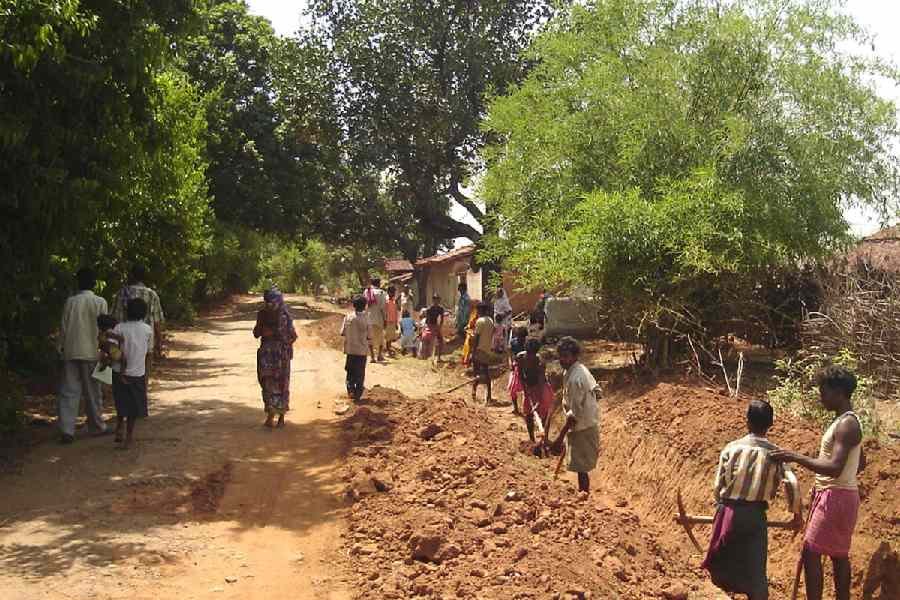If you’ve ever wondered how India’s rural population gets access to guaranteed employment opportunities, you’re in the right place! The Mahatma Gandhi National Rural Employment Guarantee Act (MGNREGA)—commonly referred to as NREGAN—is a groundbreaking program designed to provide financial security and uplift millions of rural households.
In this article, we’ll dive into what NREGAN is, how it works, its key benefits, and why it remains a crucial part of India’s economic landscape.
What Is NREGAN?
The National Rural Employment Guarantee Act (NREGAN) is a social welfare scheme launched by the Indian government in 2005, aimed at offering at least 100 days of guaranteed wage employment to rural households. Under this initiative, adult members of any rural family willing to do unskilled manual labor are entitled to employment.
Why Was NREGAN Introduced?
The primary objective of NREGAN is to enhance livelihood security by creating sustainable rural assets, reducing migration to urban areas, and fostering economic development at the grassroots level.
How Does NREGAN Work?
Wondering how you can benefit from NREGAN or how it operates? It’s quite simple! Here’s how the process unfolds:
- Registration: Eligible rural households can register under the scheme through their local Gram Panchayat.
- Job Card Issuance: A unique job card is issued, allowing beneficiaries to apply for work.
- Work Allocation: Within 15 days of application, work is provided within a 5 km radius of the applicant’s residence.
- Wage Payment: Payments are made directly to the workers’ bank accounts through Direct Benefit Transfer (DBT) to ensure transparency and efficiency.
Benefits of NREGAN
NREGAN is more than just an employment scheme—it’s a powerful tool for rural empowerment. Here are some of the top benefits:
- Financial Security: Guaranteed income for rural households helps in reducing poverty.
- Social Inclusion: Women, Scheduled Castes, and Scheduled Tribes actively participate, promoting social equity.
- Asset Creation: Projects like water conservation, road construction, and agricultural improvements enhance rural infrastructure.
- Reduced Migration: With job opportunities available locally, rural-to-urban migration has decreased significantly.
Key Achievements of NREGAN
Since its inception, NREGAN has made remarkable strides. Let’s take a look at some impressive statistics:
- 13.22 crore active workers are currently engaged under the scheme.
- Over 8.62 crore durable assets have been created, contributing to sustainable development.
- More than 179.49 crore person-days of employment have been generated.
- 4.77 crore households benefited from employment opportunities.
Challenges Faced by NREGAN
While NREGAN has had a positive impact, there are a few challenges that need to be addressed:
- Delayed Wage Payments: Despite DBT, occasional payment delays affect workers’ financial stability.
- Corruption and Mismanagement: Instances of fund misallocation and ghost beneficiaries remain concerns.
- Lack of Awareness: Many eligible beneficiaries are unaware of their rights and entitlements.
Future of NREGAN

The government continues to refine and expand the scheme, introducing digital monitoring systems, geo-tagging of assets, and skill development programs to enhance effectiveness. Projects like UNNATI, aimed at upgrading the skillset of workers, are helping them transition to better-paying jobs.
Conclusion
NREGAN has truly transformed the rural employment landscape in India. It provides more than just financial assistance; it empowers millions with dignity, stability, and opportunities to build a better future. As the program continues to evolve, it remains a beacon of hope for countless rural families.
Whether you’re a policymaker, a beneficiary, or simply someone interested in learning about India’s social welfare initiatives, NREGAN stands as a shining example of inclusive growth in action.
Do you have any questions about NREGAN? Let us know in the comments!
Internal Link:-atzworld








